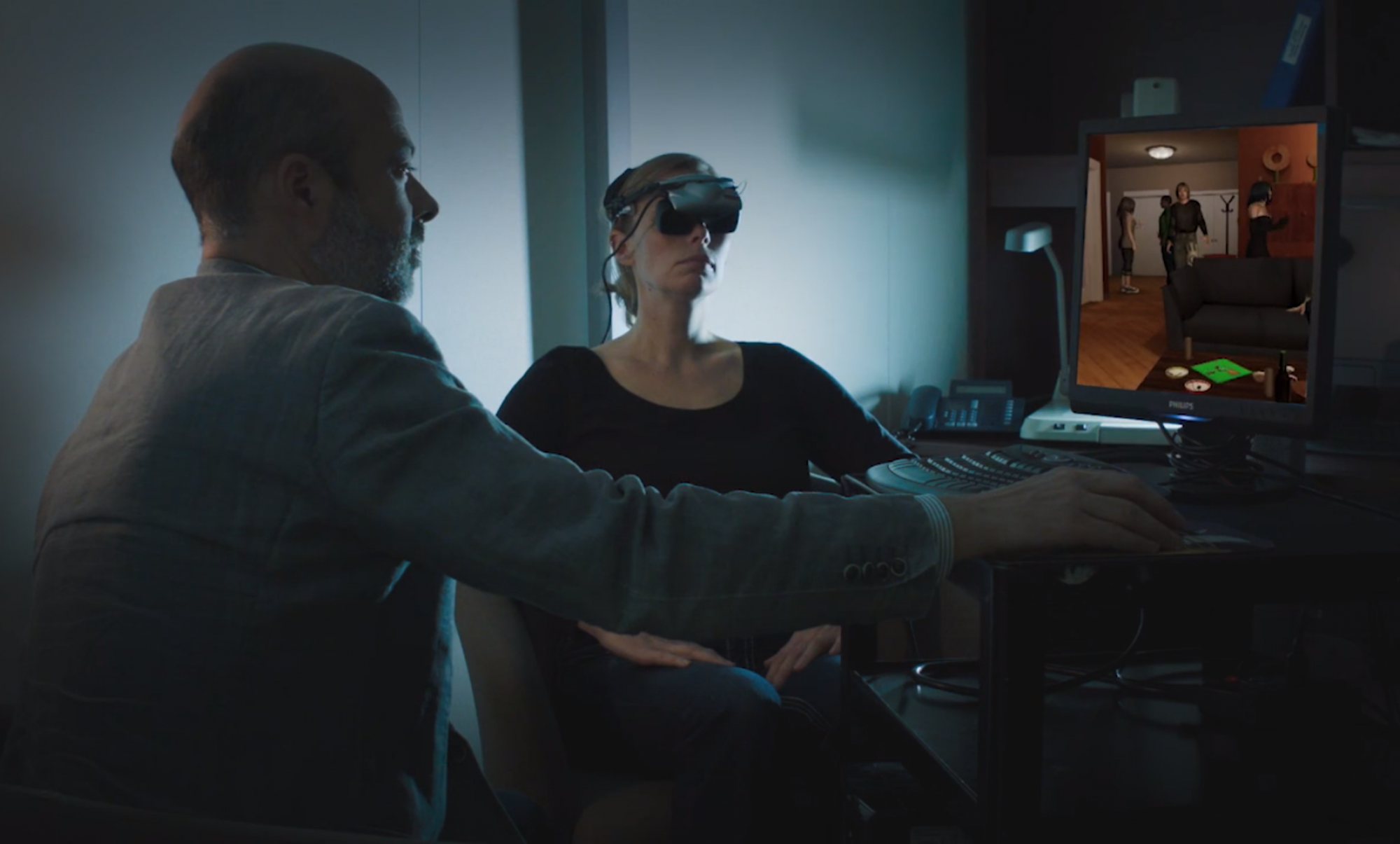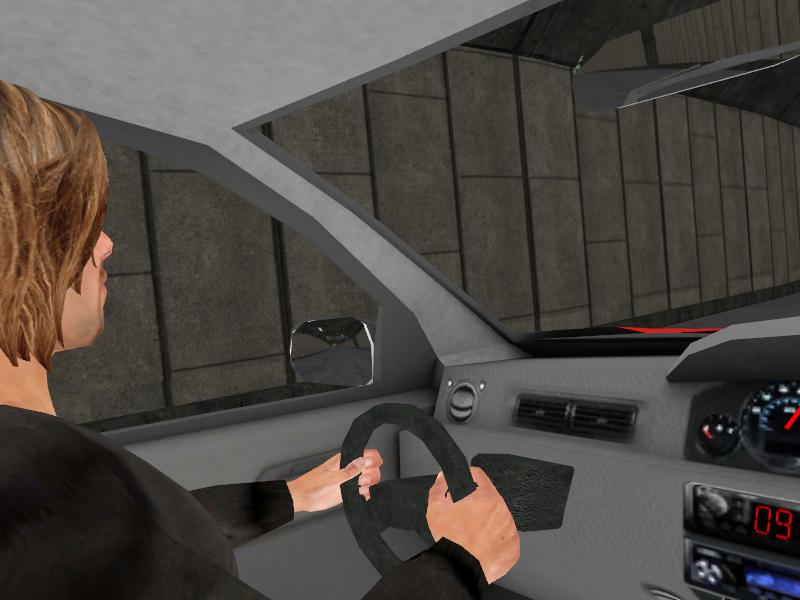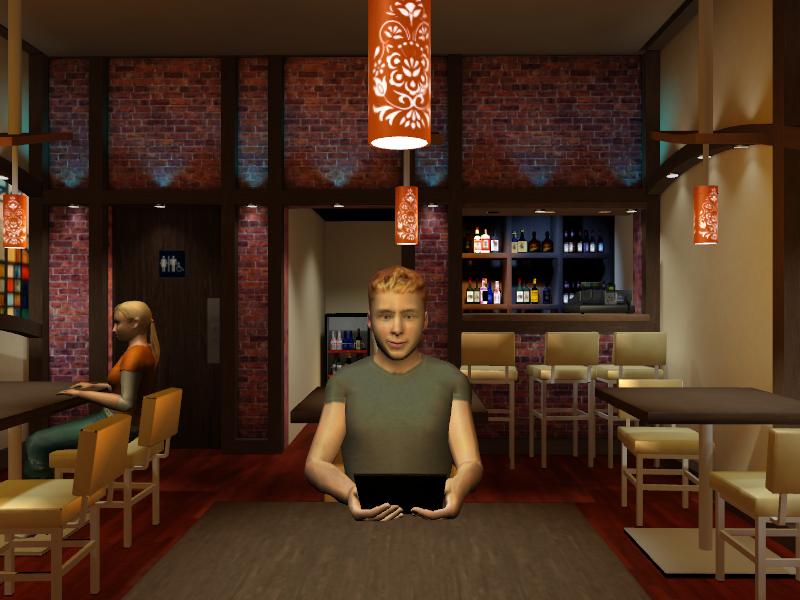Applications using virtual reality
Today, virtual environment applications include those specializing in architectural design, computer fantasy games, flight simulators and educational materials including those permitting the navigation of the human body.
Virtual reality has proven to be very useful in both the experimental and clinical fields of psychology. Indeed, cyberspychology has made it possible for researchers to exert better control over a plethora of variables possibly affecting the results of different measures. The setting up of laboratories using virtual reality in the field of psychology, of which the Cyberpsychology Lab at UQO is one example, allows researchers to enjoy a higher degree of control when studying various psychological phenomena (sexual phobias, disorders, etc.). Owing to the fact that cyberspychology represents a relatively recent avenue of research, it is difficult to provide a complete listing of all of its applications to date. Certain psychologists use virtual environments to desensitize individuals to their phobia.
Virtual reality can thus be used in fields requiring environmental simulation (museums, vehicle operation, etc.), as well as in the desensitization of phobias, assessment of sexual disorders, assessment of motivation to exercise in spatially restricted environments (space shuttle), modeling of behaviours, reduction of medical side effects, creation of environments permitting exposure to new experiences, treatment of eating disorders,treatment of sexual dysfunctions, learning of new behaviours in a controlled environment, rehabilitation of cognitive and driving functions, etc. The works of Riva, Wiederhold and Molinari (1998) and Stanney (2002) review the vast range of possibilities related to the application of virtual reality. In addition of having some advantages in the study of psychopathologies and therapeutic practices, virtual reality has proven to be an equally effective tool for research into more fundamental matters such as mnemonic, cognitive and attentional processes (Riva et al., 1998).
Applications in telehealth
As mentioned on the banner page, research in cyberpsychology encompasses more than just virtual reality. It also extends to the field of telehealth particularly where videoconference and Internet technology are concerned.
With respect to telehealth, clinical psychology has for some time made innovative use of videoconferencing. Indeed, this technology has made it possible to remotely offer mental health services and has the same advantages as all the other forms of telemedicine (better accessibility to specialized care in the region, potential reduction of costs, etc; Bashur, 1997; Bouchard, 2000). To date, many studies have already proved the feasibility of telemedicine in mental health, most notably for diagnostical assessment (Ruskin, 1998; Zarate & al., 1997) and for psychiatric consultation (Dongier & al., 1986; Dwyer, 1973; Haslam & McLaren, 2000; Kennedy & Yellowlees, 2000; Urness, 1999; Wittson & al., 1961). Moreover, a study conducted by Bouchard & al., (2000) focusing on the efficacy of telepsychotherapy for the treatment of panic disorder with agoraphobia found statistically and clinically significant results. In particular, it was found that telepsychotherapy was not only effective but also fostered the establishment of therapeutic rapport from the very first therapy session. Another interesting finding was that the feeling of presence seems to play a significant role in telepsychotherapy.
Telepresence (a technology that makes use of remote detectors linked to the sensory systems of a human operator) may become a mixed reality if it is coupled with a system of virtual reality. In particular, in addition to making its mark in clinical psychology, telepresence has become indispensable in other domains, for example in medicine. A surgeon, for instance, in addition to making use of surgical instruments equipped with mini-cameras may also choose to visualize his/her surgical activities on a screen thanks to telepresence. On the same screen, the practitioner may superimpose onto his/her movements a CAT SCAN image taken previously or a real-time ultra-sound image (for more information on this subject, please click here). Another field that has implications for telepresence is the field of aerospace (the use of telerobotics to explore space surfaces remotely). It is worth noting that telepresence has been benefiting aerospace longer than psychology or medicine.
Internet technology, much as the videoconference, has of late also been adopted as a means for treating certain pathologies in the field of psychology. For example, it is now possible to offer, via the Internet, a type of psychotherapy for a more recently recognized disorder: cyber addiction. Briefly, research to date seems to show (Keepers, 1990, cited by Young, 1996) that certain behaviours connected to the utilization of a computer are capable of fostering addiction (for example the tendency towards compulsive video game play) in a manner that differs from the addiction to psychoactive substances. The Internet thus offers possibilities for psychotherapy, either via the chat room format or by using web pages.
References
Pratt, D.R., Zyda, M., & Kelleher, K. (1995). Virtual reality: In the mind of the beholder. IEEE Computer, 28(7), 17-19.
Blade, R.A., & Padgett, M.L. (2002). Virtual environments: History and profession. Dans K.M. Stanney (Éds.). Handbook of virtual environments : Design, implementation and applications (pp. 1167-1177). Mahwah, N.J.: IEA.
Riva, G., Wiederhold, B.K., & Molinari, E. (1998). Virtual environments in clinical psychology and neuroscience: Methods and techniques in advanced patient-therapist interaction. Washington: IOS Press. Stanney, K.M. (2002). Handbook of virtual environments: Design, implementation and applications. Mahwah, N.J.: IEA




